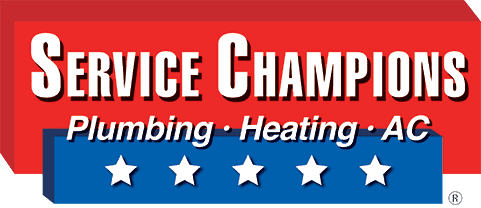Will Replacing My Attic Insulation Really Help Me Save Money on My Energy Bill?
As homeowners, we are always looking for ways to increase the comfort of our homes while keeping costs down. One question that many people ask is: “Will replacing my attic insulation really help me save money on my energy bill?”
It’s a valid question, considering that heating and cooling account for a significant portion of our monthly utility expenses. The answer, however, isn’t as straightforward as you might think.
Key Takeaways
- Attic insulation is a material that helps create a barrier between the roof and ceiling of your home.
- Insulation is designed to regulate the temperature in your home by keeping heat indoors during the winter and blocking outside temperatures during the hot summer months.
- There are different kinds of insulation materials available, including batt, blown, spray foam, and reflective – each with their own costs ranging from $0.20 to $4.50 per square foot.
- Insulation that is old or damaged can have a significant effect on your heating or cooling bills, however, the cost-savings of new insulation will depend on a variety of factors, including the size of your home, the local climate, and the overall condition of the insulation.
What Exactly is Attic Insulation?
Attic insulation is the material that creates a barrier between your attic ceiling and the roof of your house. Its purpose is to block heat flow, and its R-value determines its effectiveness. The higher the R-value, the better the insulation prevents heat transfer.
Attic insulation plays a vital role in maintaining the temperature of your home. Its primary purpose is to create a protective barrier that prevents heat transfer.
In the winter, it ensures that the warm air your heating system produces stays inside, keeping the air indoors comfortable. And during hotter months, it effectively blocks the heat from the sun-soaked roof, preventing it from infiltrating your living spaces.
By maintaining a more consistent temperature in your home, attic insulation reduces the need for your heating and cooling systems to work overtime, leading to significant energy savings.
There are several different types of attic insulation available, each with its pros and cons:
- Batt insulationis made from fiberglass or rock wool and comes in pre-cut panels. It’s widely used due to its affordability and ease of installation.
- Blown-in insulation, often made of cellulose or loose-fill fiberglass, is blown into place using special equipment. It provides excellent coverage, especially in hard-to-reach areas.
- Spray foam insulationexpands when applied, creating a tight seal. It offers high R-values and excellent energy efficiency but is also the most expensive option.
- Reflective or radiant barrier insulationis typically used in hot climates and works by reflecting radiant heat away from the home.
The Connection Between Attic Insulation and Energy Bills
Attic insulation plays a crucial role in regulating a home’s temperature. Here’s how:
Prevents Heat Transfer
Insulation works on the principle of resisting heat flow. During winter, it prevents the warm air your heating system generates from escaping through the roof. In summer, it stops the heat from the sun-soaked roof from infiltrating into your living areas. This leads to a more consistent and comfortable temperature within your home.
Reduces Energy Consumption
By maintaining a stable indoor temperature, attic insulation reduces the need for your heating and cooling systems to work excessively. This not only helps in conserving energy but also reduces wear and tear on these systems.

Influence of Insulation Quality
The quality and type of insulation can significantly affect its efficiency. If your attic insulation has become flat, broken, or worn out, it can dramatically affect your indoor temperature. Lack of proper insulation allows for faster heat exchange, making your house uncomfortable during summer and cold during winter.
Effects of Poor Insulation
Without proper insulation, nearly 40% of the heat in your home can be lost through the attic during winter. Similarly, in summer, insufficient insulation allows the attic temperatures to soar as the heat outside increases, increasing indoor temperatures.
Impact on Air Conditioning
Poor attic insulation increases the strain on your air conditioning system during summer. The hot air that enters your home due to poor insulation makes the air conditioning system work harder to cool down the indoor air, consuming more energy and potentially increasing your energy bills.
The Cost of Replacing Attic Insulation
The cost is a significant factor when deciding whether to replace or upgrade your attic insulation. Below are some considerations to keep in mind:
1. Material Costs
The price of insulation is determined by the type you select:
- Batt insulation is generally the most cost-effective choice, costing between $0.80 and $2.60 per square foot.
- Blown-in insulation falls in the middle range, costing $1.00 to $2.80 per square foot.
- Spray foam insulation is the most expensive, ranging from $1.25 to $4.50 per square foot.
- Reflective or radiant barrier insulation sits between the others, priced at around $0.20 to $0.80 per square foot.

2. Labor Costs
When considering hiring professionals for installation, it is crucial to consider labor costs. These costs may vary depending on your specific location and the complexity of the job. Generally, they fall within the $1.00 to $3.00 per square foot.
It is noteworthy that professional installers know what they’re doing, ensuring a precise and efficient installation process that can enhance the effectiveness and durability of the insulation.
3. Removal and Disposal of Old Insulation
If your attic currently has old or damaged insulation that needs to be removed, there may be additional costs for removal and disposal. This can range from $1.00 to $2.00 per square foot.
Removing old insulation is messy, time-consuming, and requires special equipment and protective gear. Disposing of old insulation properly is also essential, as certain types can contain harmful materials.
4. Size of the Area to be Insulated
Naturally, the larger the attic, the more material will be needed and the higher the cost. Similarly, a larger area will take longer to insulate, which could increase labor costs. The shape and accessibility of your attic can also affect the price.
For instance, an attic with many corners and hard-to-reach areas might take more time and effort to insulate, potentially increasing the cost.
5. Additional Costs
You should keep in mind that there are possible extra expenses associated with installing new insulation, such as the rental of specialized equipment or the purchase of protective gear if you choose to undertake it yourself.
Additionally, if any repairs or enhancements are required for the attic before installing the insulation, such as sealing leaks or improving ventilation, it is essential to consider these costs as well.
Will Replacing Attic Insulation Save Money on Energy Bills?
The short answer is yes. Replacing attic insulation can indeed save money on energy bills. But let’s delve a bit deeper to understand how and why.
Effective attic insulation works as a protective shield, efficiently controlling the heat flow between your home and the external environment. It retains the warmth generated by your heating system for an extended period during winter, diminishing the need for continuous heating.
In the summer, insulation is a barrier, preventing the blazing heat from penetrating your living areas via the roof. Consequently, this relieves the strain on your air conditioning unit.
The significance of this is seen in the savings it brings. When you improve your insulation, your heating and cooling systems do not have to exert as much effort, leading to reduced energy consumption.
The Environmental Protection Agency (EPA) projects that homeowners can save approximately 15% on heating and cooling expenses (equivalent to up to 11% of overall energy expenses) by adding insulation in specific areas like attics, floors above crawl spaces, and accessible basement rim joists.

The amount of money you will save on energy bills is influenced by several factors, such as the type and age of your heating and cooling systems, the size of your home, the local climate, and the condition of your insulation.
Replacing old, damaged or improperly installed insulation can lead to noticeable cost savings. However, the savings may not be as significant if your insulation is still in good condition.
Make Sure Your Insulation is Working Properly
Insulation can’t help you conserve energy if it’s not working correctly. This means that regular checks and maintenance are essential. Inspecting the insulation for damage, air leaks, or signs of pests should be done at least once a year. Additionally, having your attic inspected by an HVAC professional to ensure the insulation is doing its job is a good idea.

Service Champions can help you better understand your attic insulation needs and provide professional installation services. Their experts will help you determine the best type of insulation for your home and climate, install it properly, and ensure it does its job how it should. Contact Service Champions today.

